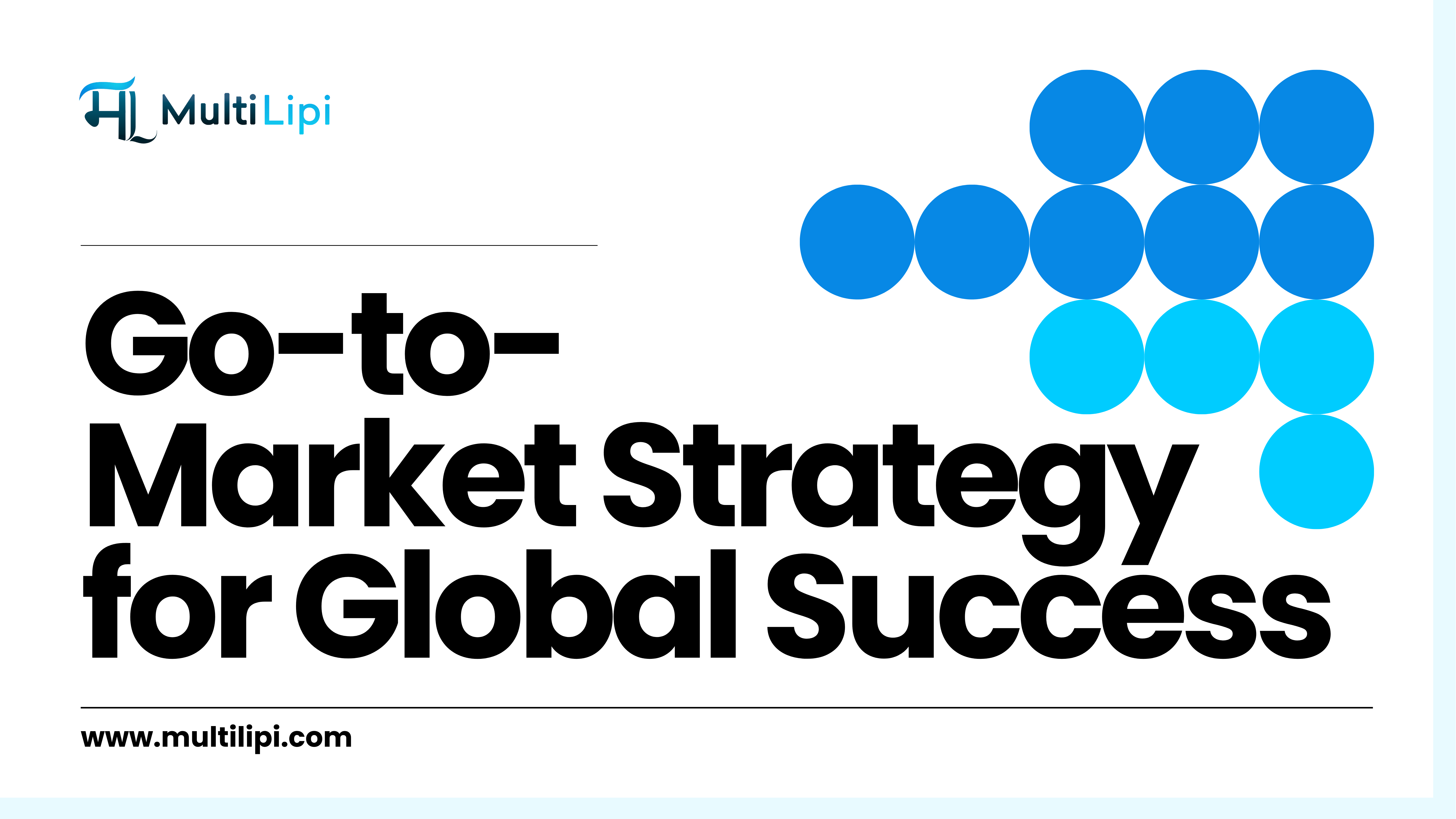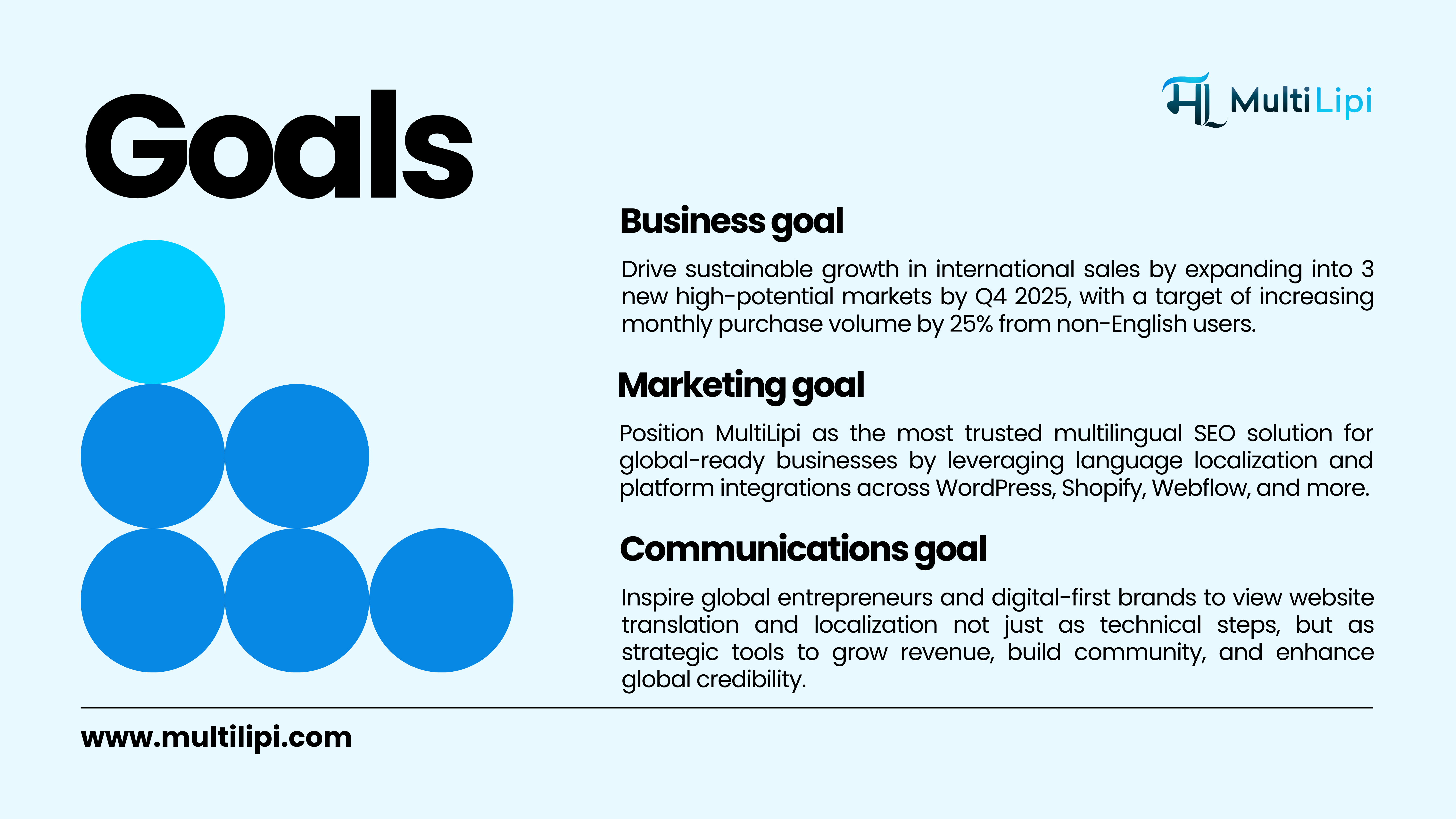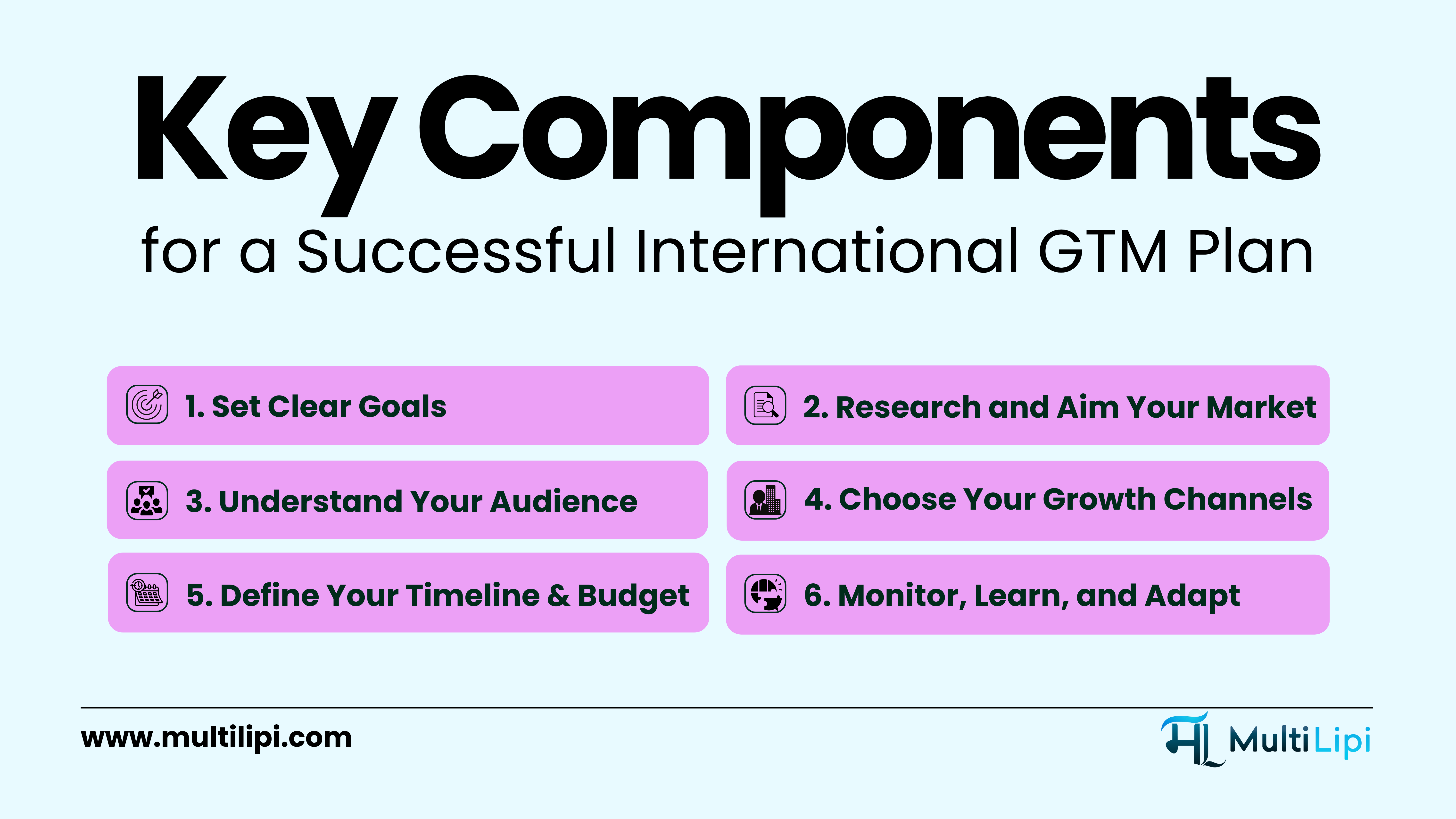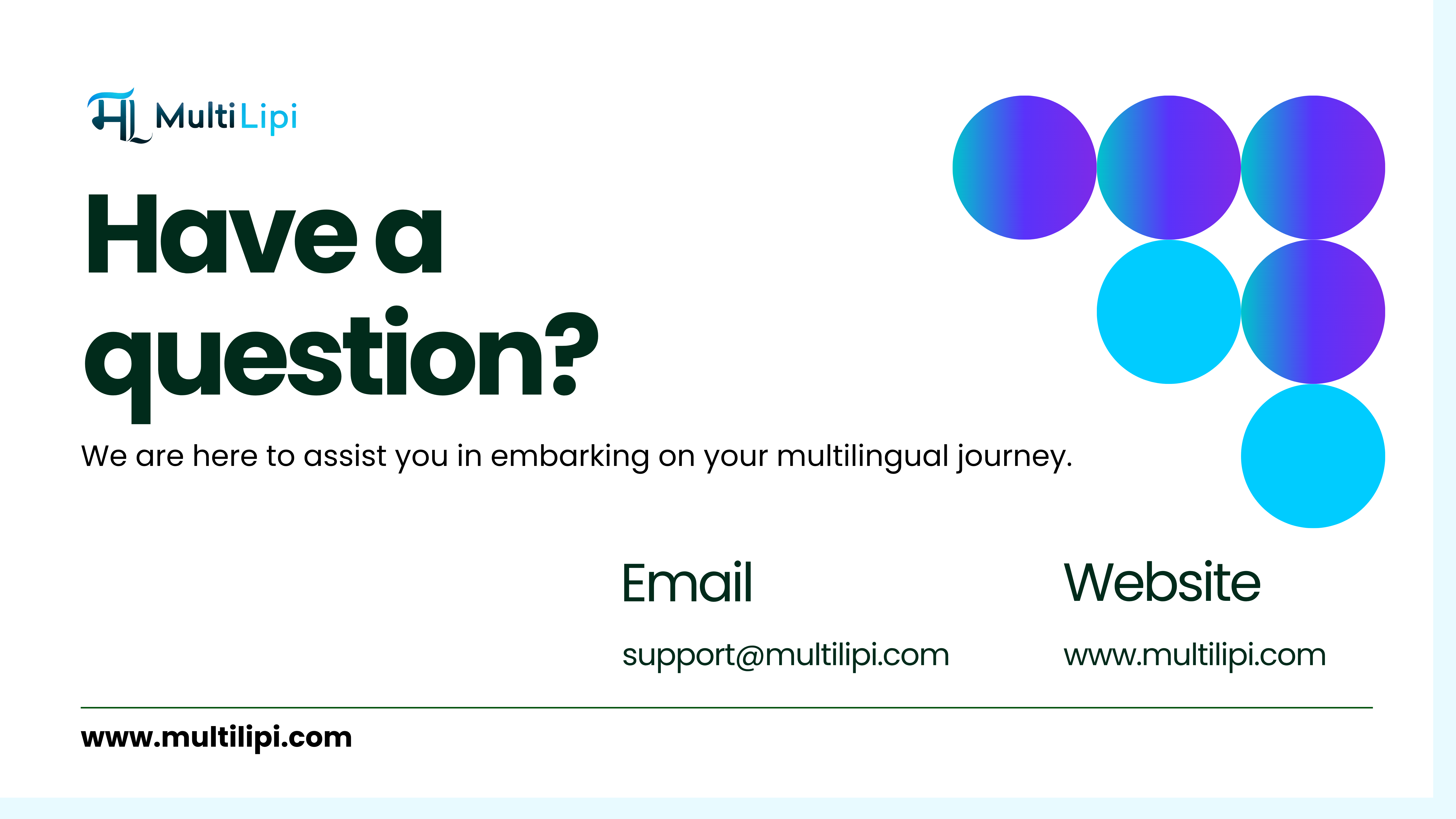Mastering Global Expansion: Your 2025 Go-to-Market Strategy Guide

Expanding your business into international markets in 2025 is a bold and exciting move. However, succeeding globally requires more than enthusiasm – it demands a well-structured international go-to-market (GTM) strategy. From choosing the right countries to ensuring your website is ready for global visitors, there are many factors to address before you launch abroad.
To simplify the process, we have created a free International GTM Planner template that will guide you step by step in building your strategy. It's based on our experience helping companies expand globally and includes all the essential sections you'll need. You can copy the planner and start filling it out for your own project — just download your free International GTM Planner template to get started. This article will serve as a complementary guide to help you confidently complete each key section of the planner.
Why an International GTM Strategy Matters

Going global can unlock significant growth opportunities, but it also introduces new challenges and complexities. An international GTM strategy is your comprehensive plan for entering a new country or region. It aligns your goals, market research, messaging, localization efforts, and marketing tactics into one clear roadmap.
Without a strategy, businesses often run into pitfalls when expanding overseas. It's easy to:
- Rely on guesswork or assumptions instead of real market insights
- Choose the wrong market for expansion and misjudge demand
- Overspend time and budget on ineffective approaches
- Overlook critical cultural, legal, or language differences
Having a structured plan helps you avoid these mistakes. By mapping out the important steps and decisions in advance, you can allocate resources wisely and adapt your business model to each local context before fully committing.
Key Components of a Successful International GTM Plan

The following are the key components of a robust international go-to-market plan. We’ll break down each element and what to focus on:
1. Set Clear Goals
Start by defining why you are expanding and what success looks like. Are you aiming to increase revenue, diversify your customer base, mitigate home-market risks, or meet existing international demand? Your objectives should be specific and measurable.
Examples of clear expansion goals:
- Achieve 20% of total revenue from new international markets within 12 months
- Launch in one new country this year as a pilot before scaling to additional regions
By setting a well-defined goal, you provide direction for your team and a benchmark to measure progress. This prevents a haphazard “let’s try and hope for the best” approach. Instead of improvising, you’ll have a concrete target to guide strategic decisions and evaluate results.
2. Research and Choose Your Target Market
Not all markets are equal, and an opportunity that’s hot for one company might not be right for yours. Thorough market research is crucial to identify which country or region offers the best fit for your product or service, and the importance of localization
When evaluating potential target markets, consider factors like:
- Existing interest or demand: Do you already see website traffic, inquiries, or sales coming from a particular country? This can be a strong indicator of organic demand.
- Market size and growth: What is the total addressable market in that region? Look at the number of potential customers and their purchasing power or business need for your solution.
- Local competition: Who are the incumbent competitors in that market and how saturated is it? A market with high demand but few strong local competitors might be ideal. Conversely, a crowded market will be tougher to break into without a distinct advantage.
- Regulatory and operational factors: Consider legal requirements (e.g. data privacy laws, product regulations) and operational challenges (shipping logistics, payment methods, local hiring) in each country. Some markets are more business-friendly than others, while others may pose compliance hurdles.
By analyzing these aspects, you can prioritize a market based on real data rather than hunches or hype. For instance, just because a LinkedIn post proclaims that Country X is the “next big thing” doesn’t mean it aligns with your business. A data-driven choice ensures you invest in a market with genuine potential for your offering and guides your expansion strategy accordingly.
3. Understand Your Local Audience
Even if your product or service is fundamentally the same in a new market, your messaging and approach may need to change to resonate with local audiences. Before launching, take time to understand the target customers in that region on a deeper level.
Research your new audience’s pain points, preferences, and cultural norms. Ask questions like:
- What specific problems or needs do they have that your product can solve? Are these needs exactly the same as in your home market, or do they have a different twist locally?
- What local values, customs, or business practices might affect how your product is perceived?
- What tone, style, or channels of communication does the local audience respond to? (For example, some cultures prefer very formal business communications, while others respond well to a more conversational tone in marketing.)
These insights should shape how you position your product and communicate its value in a way that makes sense to the new audience. You might discover you need to highlight a different benefit as the key selling point, or adjust your branding to align with local tastes. Companies that succeed abroad often adjust their messaging – and even aspects of their product – to fit local market expectations. Remember, effective localization goes beyond translation – it’s about adapting to the cultural context so that your offering feels native to the audience.
For example, Amazon’s international success is largely attributed to meeting customers on their own terms — offering local languages, currencies, and user experiences tailored to local preferences. This level of adaptation has been pivotal to building trust and a strong user base in each market.
4. Choose Your Growth Channels
Determine the best marketing and distribution channels to reach your new audience. What worked in your home country can be a starting point, but be ready to adjust based on local media consumption and buyer behavior.
Depending on the market, effective channels might include:
- Search engines and content marketing: Optimize for local search (including multilingual SEO) and create high-quality content that addresses local topics or questions. If people in your target country rely heavily on search to find solutions, investing in localized SEO and informative blog content will pay off.
- Paid advertising: Consider local digital ad platforms and search engine marketing. For example, if you’re expanding into China, Baidu ads might be more important than Google Ads. Ensure your ad copy is translated and culturally adapted for the market.
- Social media and community platforms: Research which social networks or messaging apps are most popular in your target region. (In some countries, platforms like Facebook or Instagram dominate; in others, local networks or apps take precedence.) Establish a presence and engage potential customers on the channels they use daily.
- Local partnerships or influencers: Building credibility can be faster if you partner with established local businesses or work with influencers who already have the trust of your audience. They can help promote your product or service in a way that feels authentic to the community.
- Events and direct outreach: In certain markets, attending industry trade shows, hosting local events, or doing direct sales outreach in the local language may be effective – especially for B2B offerings. Personal interaction can go a long way in markets where relationships are key.
Start with a few channels that align best with what you learned about the audience. The key is to test and learn – monitor which channels are driving engagement or leads, and be ready to double down on what works (and to pull back from what doesn’t). Your go-to-market playbook will likely evolve as you gain real-world feedback from the market.
(Pro Tip: Leverage AI tools to refine your marketing content for each locale. For instance, you can use AI to generate copy variations or social media posts tailored to local cultural references. Just be sure a native speaker reviews these for accuracy and tone before publishing.)
Read our customers success for better insights
5. Define Your Timeline and Budget
Launching in a new market doesn’t have to be prohibitively expensive, but it does require planning and smart resource allocation. Establish a timeline with key milestones and set a realistic budget for your international launch.
Some tips for planning your rollout:
- Start with a pilot phase: Rather than a full nationwide launch on day one, you might begin with a soft launch or a focus on one region/city to test the waters. This phased approach allows you to gather insights and refine your strategy with lower risk and cost.
- Allocate budget to localization: One area you should not skimp on is localization. This includes translating your website and marketing materials, adapting your product (e.g. currency, units, legal terms) to local needs, and possibly hiring local support or consultants. Language is often the first barrier for new customers, so removing it can quickly increase trust and conversions. Translating your website is one of the most cost-effective first steps; it immediately makes your brand accessible to a wider audience. Modern solutions (like MultiLipi) make it easy to launch a multilingual, SEO-optimized website in minutes with AI translation and optional human review. This means you can present a professional local online presence almost immediately, without heavy engineering work.
- Use data to guide budget decisions: As you start marketing in the new region, keep a close eye on metrics like website traffic, conversion rates, and customer acquisition cost. If you see positive traction (e.g. a particular campaign is yielding strong ROI or one region is showing especially high demand), you can justify investing more in those areas. On the other hand, if something isn’t working, be prepared to pivot your budget to different channels or tactics.
- Plan operational logistics early: Budget isn’t just for marketing. Make sure you factor in operational costs such as shipping and distribution, warehousing, local staffing, travel, or legal fees. It’s wise to set up any needed operational infrastructure well ahead of your public launch. For instance, if you need a local business entity or have to integrate local payment systems, build that into your timeline. Delays in these areas can affect your launch date, so assign owners and deadlines to each operational task.
The International GTM Planner template includes a section to outline your localization and launch tasks. Use it to map out which components of your website or product will be localized, who is responsible for each task, and when they need to be completed. By visualizing the timeline in advance, you can ensure all teams (product, marketing, sales, support) stay coordinated for a smooth launch.
6. Monitor, Learn, and Adapt
Once you execute your launch, the work isn’t over – in fact, it’s just beginning. Successful international growth is an iterative process. Monitor your performance metrics closely and gather feedback from real customers in the new market, then use those insights to continually refine your approach.
Key actions after launch:
- Track your KPIs and goals: Measure how you’re performing against the goals you set (e.g. revenue from the new market, number of new customers, market share attained). Also watch leading indicators like localized website traffic, engagement on local social channels, and conversion rates on your translated site or app.
- Listen to customer feedback: Pay attention to reviews, customer support tickets, and social media comments from your new international users. Are there recurring pain points or requests? Feedback can reveal if your product needs minor tweaks, if your customer service hours/methods are adequate, or if your marketing message is resonating. This local feedback is invaluable for making your offering more appealing.
- Refine your strategy iteratively: Use the data and feedback to adjust your tactics. Maybe you’ll find that one marketing channel vastly outperforms others and should become your primary focus. Or perhaps your initial messaging isn’t clicking and you need to reposition the value proposition in that market. Treat the first 6-12 months as a learning period. Be ready to iterate on everything – from your ad creatives and landing pages to pricing or features – to better fit local needs. Agile adjustments will improve your success over time.
- Scale up what works: When you identify strategies that are working well, double down on them. Increase investment in the campaigns or channels that are delivering results. Also, document these successful tactics; they can serve as a playbook for entering future markets or expanding further in the current one. Conversely, don’t be afraid to discontinue efforts that consistently underperform, for better understanding Read the ROI on multilingual assets here
Remember that an international go-to-market strategy is not a “set it and forget it” plan. Global markets are dynamic – customer preferences, economic conditions, or competitive landscapes can shift. By staying data-driven and adaptable, you’ll be able to navigate challenges and capitalize on new opportunities in your target market.
Getting Started with Your GTM Plan (Free Planner)
Your international expansion plan does not need to be perfect from day one. It just needs to be clear enough to guide your team, help you avoid common pitfalls, and provide a foundation to build upon as you learn more about the market. That’s where our planner comes in. By using the International GTM Planner template and the guidelines above, you can develop a comprehensive expansion strategy in a short time.
Duplicate the planner and fill in each section we discussed – from setting your goals and researching the market to mapping out your localization and launch timeline. By the end, you will have a tailored go-to-market plan for your chosen country or region.
Expanding globally is a challenge, but you don’t have to do it alone. When you’re ready to make your website truly speak to your new audience, MultiLipi is here to support you in that step. With MultiLipi, you can instantly translate your website into 120+ languages and ensure all your multilingual content is optimized for SEO from the start. This way, your brand’s first impression in any market is in the visitor’s language, delivered fast and search-engine friendly.
Kickstart your multilingual journey by monitoring your website's word count and SEO optimization with these handy tools: check word count here and track SEO optimization here.
Get started with MultiLipi for free and see how quickly you can launch a multilingual, globally optimized website to complement your international GTM strategy. Here’s to your global growth in 2025 and beyond!


Comments